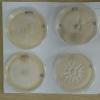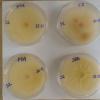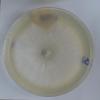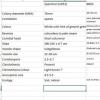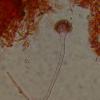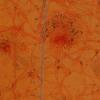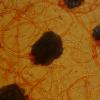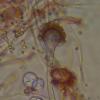
26-12-2019 16:05
 Stephen Martin Mifsud
Stephen Martin Mifsud
I was trying to recultivate a species of Talaromyc

25-12-2019 23:16
 Stephen Martin Mifsud
Stephen Martin Mifsud
I am culturing and trying to identify three asperg

26-12-2019 11:34
 Marc Detollenaere
Marc Detollenaere
Dear forum, Yesterday I found an tree-like an

20-12-2019 11:33
 Bernard CLESSE
Bernard CLESSE
Récolte et photos en provenance d'amis espagnols.

24-12-2019 13:10
 Maria Plekkenpol
Maria Plekkenpol
Hello,First of all ofcourse Merry Christmas and a

21-12-2019 18:33
PASCAL DUBOCRe aussi minuscules, mais blanc hirsute, réactio

12-12-2019 18:36
Roland LabbéBonjours ! Voici un Trichoderma (Hypocrea) inconn

21-12-2019 02:09
 Viktorie Halasu
Viktorie Halasu
Hello forum, I've found this one on bark of a dea
Aspergillus sect. fumigati
Stephen Martin Mifsud,
26-12-2019 16:05
 I was trying to recultivate a species of Talaromyces growing on Washingtonia seeds fallen on the soil. The seeds and specimen was dried at room temp. Months later, I tried to recultivate the Talaromyces from the seed husks, kernels, etc and I got instead a range of interesting microfungi including three Aspergillus sp.
I was trying to recultivate a species of Talaromyces growing on Washingtonia seeds fallen on the soil. The seeds and specimen was dried at room temp. Months later, I tried to recultivate the Talaromyces from the seed husks, kernels, etc and I got instead a range of interesting microfungi including three Aspergillus sp.One of them formed white colonies, fast growing at 24C but on a closer look they had few grey-green conidiophores with shortly columnar conidial heads. The Vesicles were subglobular, 10-18um wide, with one series phialides about 6um long, emerging from about 2/3 of the vesicle (not fully radiating). Conidia in dense inticated chains forming 50-80um columnar or subglobose heads, each conidiospore 2.5um, sphereical, greyish-green. Conidiophores smooth, 60-120um long, 5-7um wide, somewhat expanding below the vesicle (but not always),
Also present where clesitotheca producing hundreds of globulae asci holding 8 ascospores. There where about 5-6um wide with their characteristical two radial wings and what I think to have seen under x1000 oil immersion, spines or warts on the dorsal/ventral side.
With the data available, I have thought the species is Aspergillus sect. fumigati, and despite not having an electron microcope to see the ornamentation of the ascospores, I think the warted surfaces and other characters collectively lead to the species pseudofisheri.
The colonies on OAT, PDA, CZ and MEA where overall white (much more green in A. fischeri)

